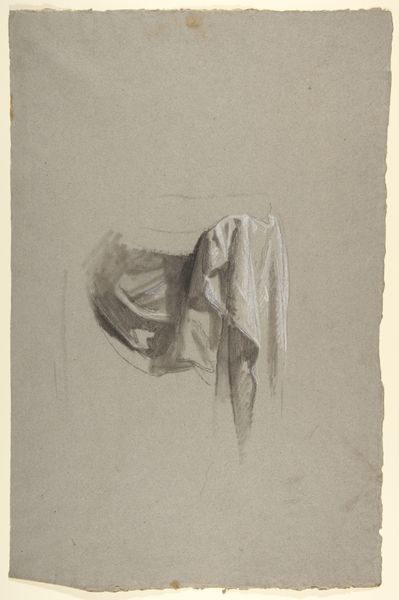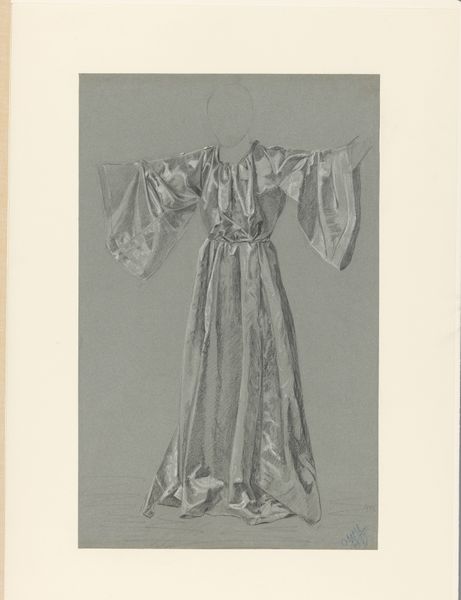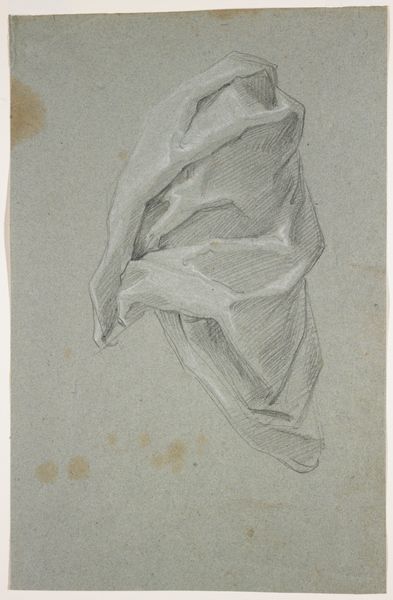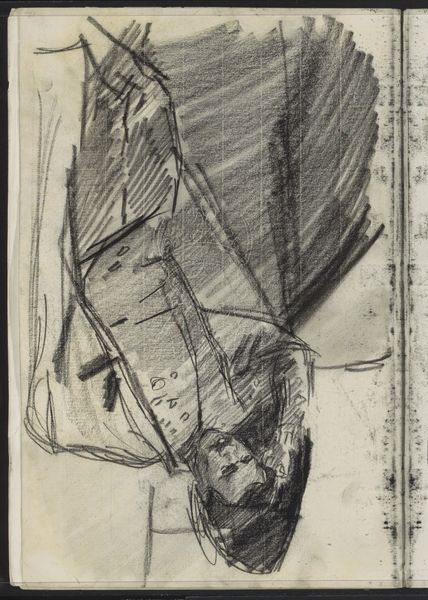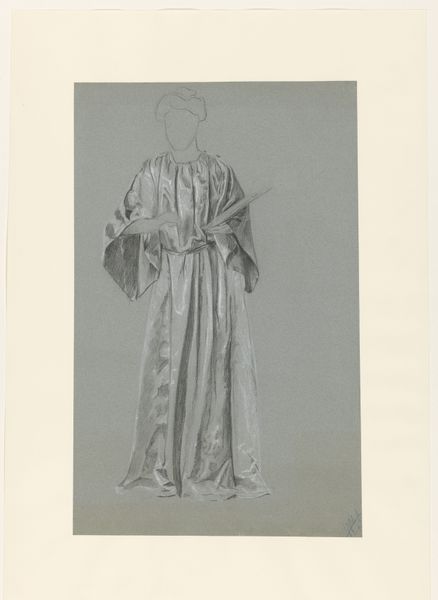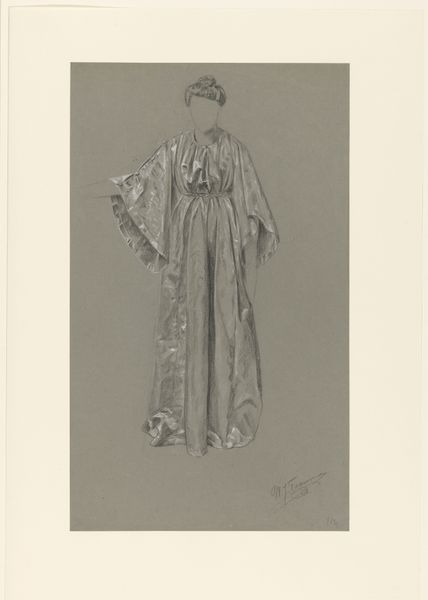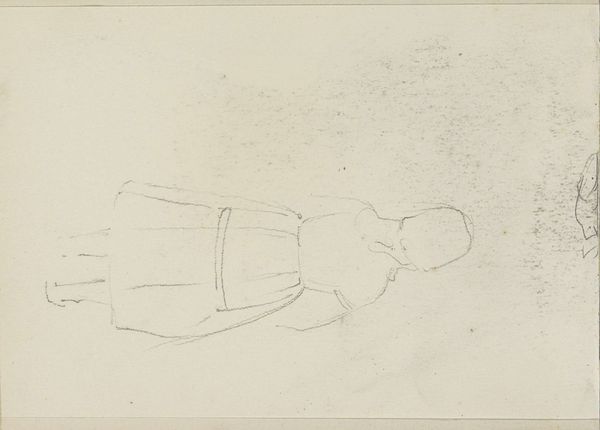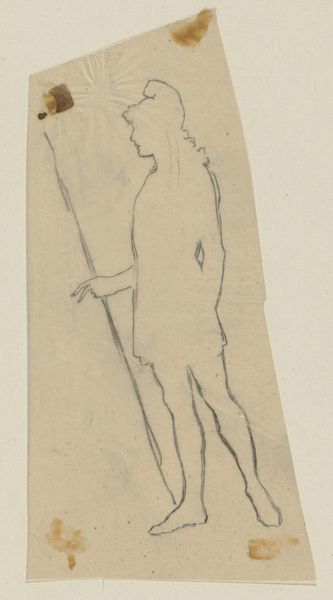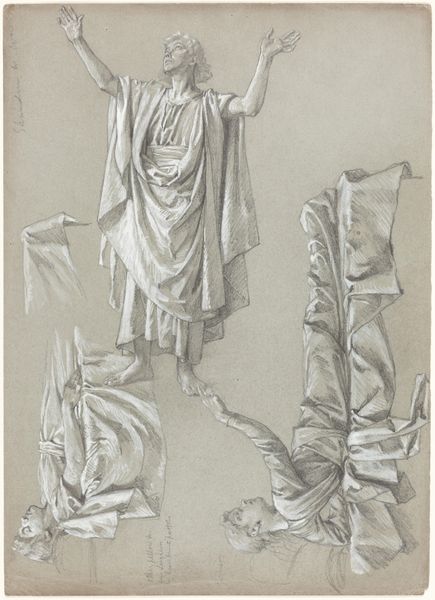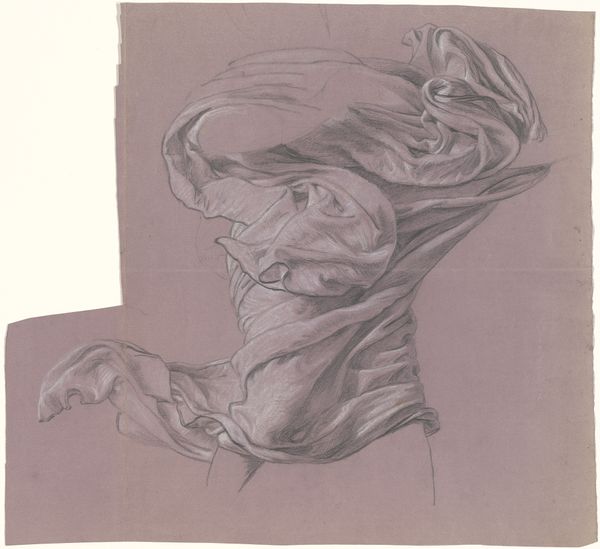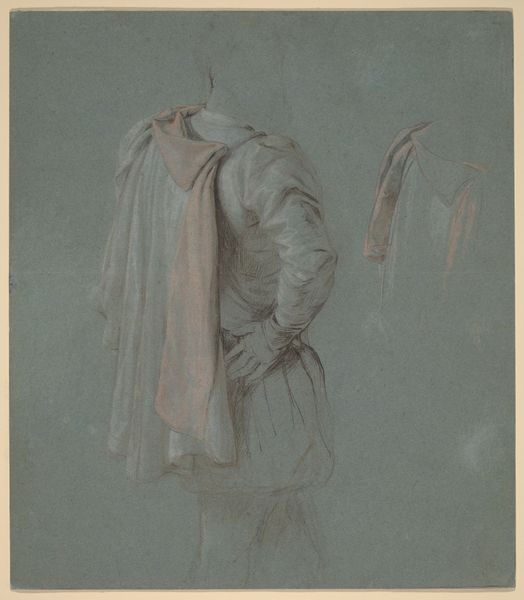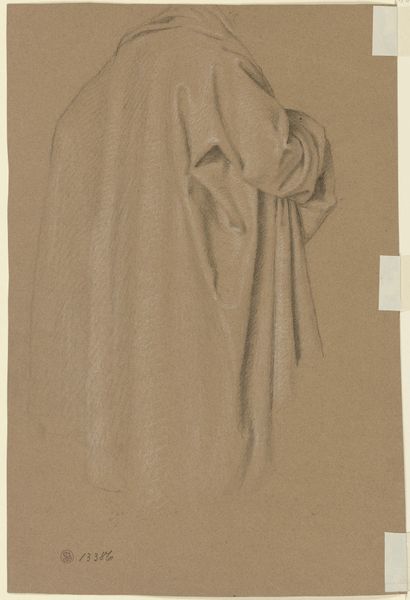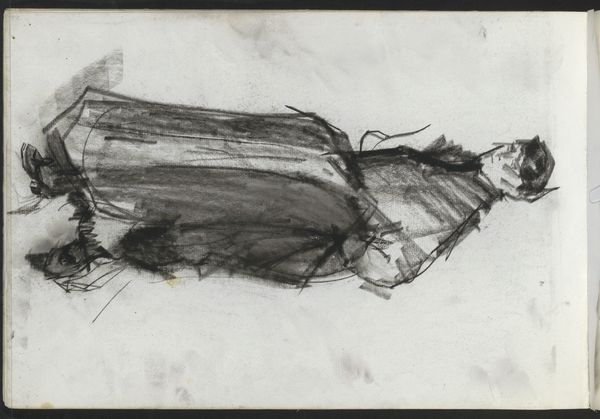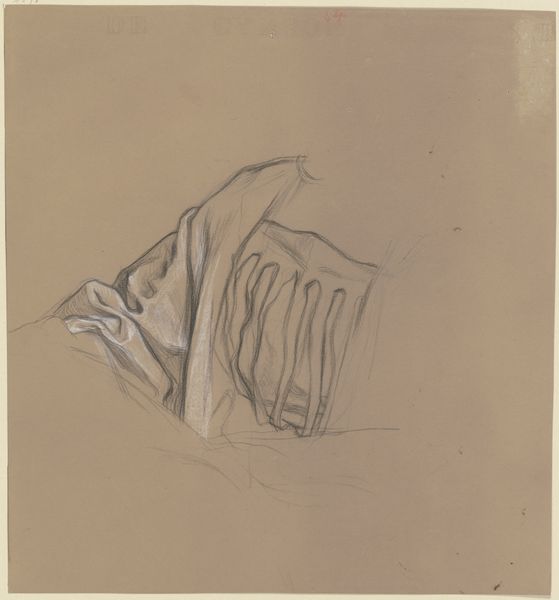
drawing, paper, pencil
#
drawing
#
etching
#
figuration
#
paper
#
pencil
#
academic-art
Dimensions: height 295 mm, width 336 mm
Copyright: Rijks Museum: Open Domain
Curator: Here we have Jacob Taanman's "Gewaadstudie en twee details," or "Study of a Robe and Two Details," which dates roughly from 1846 to 1923. It’s a drawing, combining pencil and etching on paper, and is part of the Rijksmuseum's collection. Editor: The texture is striking, it feels almost photographic despite being created with humble materials. There is a concentration on the interplay of light on the drapery. It feels muted and academic, the kind of sketch made in preparation for some grand history painting. Curator: Absolutely, and that's what makes this preparatory work so revealing. The way fabric is rendered tells us so much about the social position of the wearer and their connection to ideas of status, display, and even piety. We can view these folds, in a sense, as stand-ins for the unwritten narratives clothing helps create. Editor: I find it fascinating how Taanman isolates these specific studies, abstracting away from the body to emphasize the labor involved in rendering realistic textures, while perhaps gesturing toward the textile industry, particularly regarding fine garments of the period and its social history of production. Curator: That brings in fascinating considerations regarding accessibility, who has the economic agency to wear and display these items and what systems of class and power are implied, both on a surface reading and if we go deeper in considering things like international trade or colonialism. Editor: It almost asks us to deconstruct this form. Without the figure’s identity, all we are left with are the materials and craftsmanship. There’s also something deeply tactile that comes across through Taanman's mastery of line and shade. Curator: Exactly, it forces us to address the silent power of objects. The study shows that things have agency and how cultural values materialize in them. Editor: The materiality becomes a form of unspoken communication, giving presence to the socio-political moment and our current perception of class dynamics. Curator: By centering material exploration, this etching helps uncover the multi-layered history embedded in everyday wear. It shows, that to understand social order, one must see beyond the surface, focusing on the construction of status. Editor: And also challenges viewers to see labor not only as part of artmaking but as a lens through which history can be examined, giving everyday things agency.
Comments
No comments
Be the first to comment and join the conversation on the ultimate creative platform.
